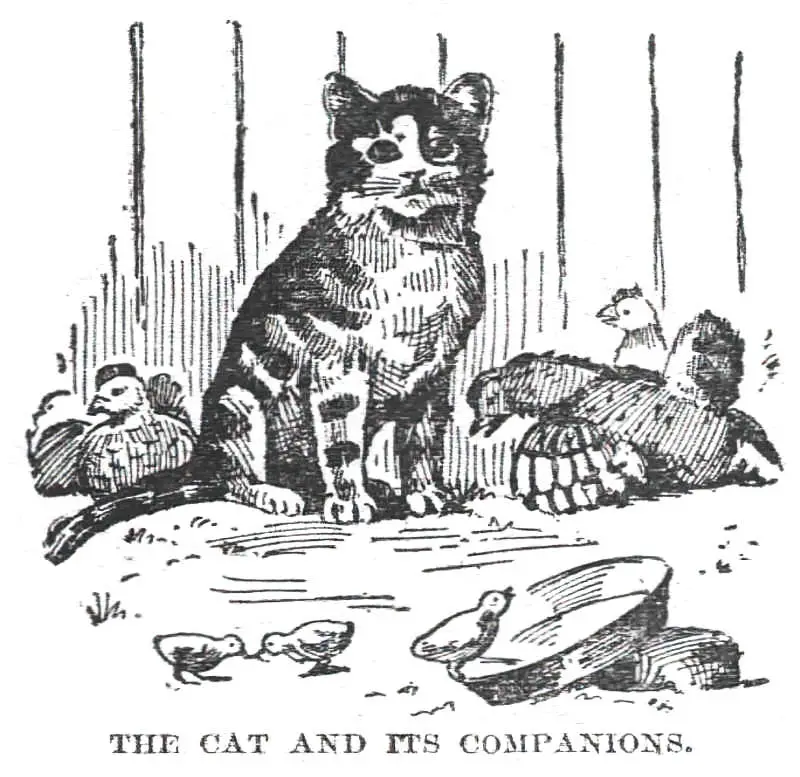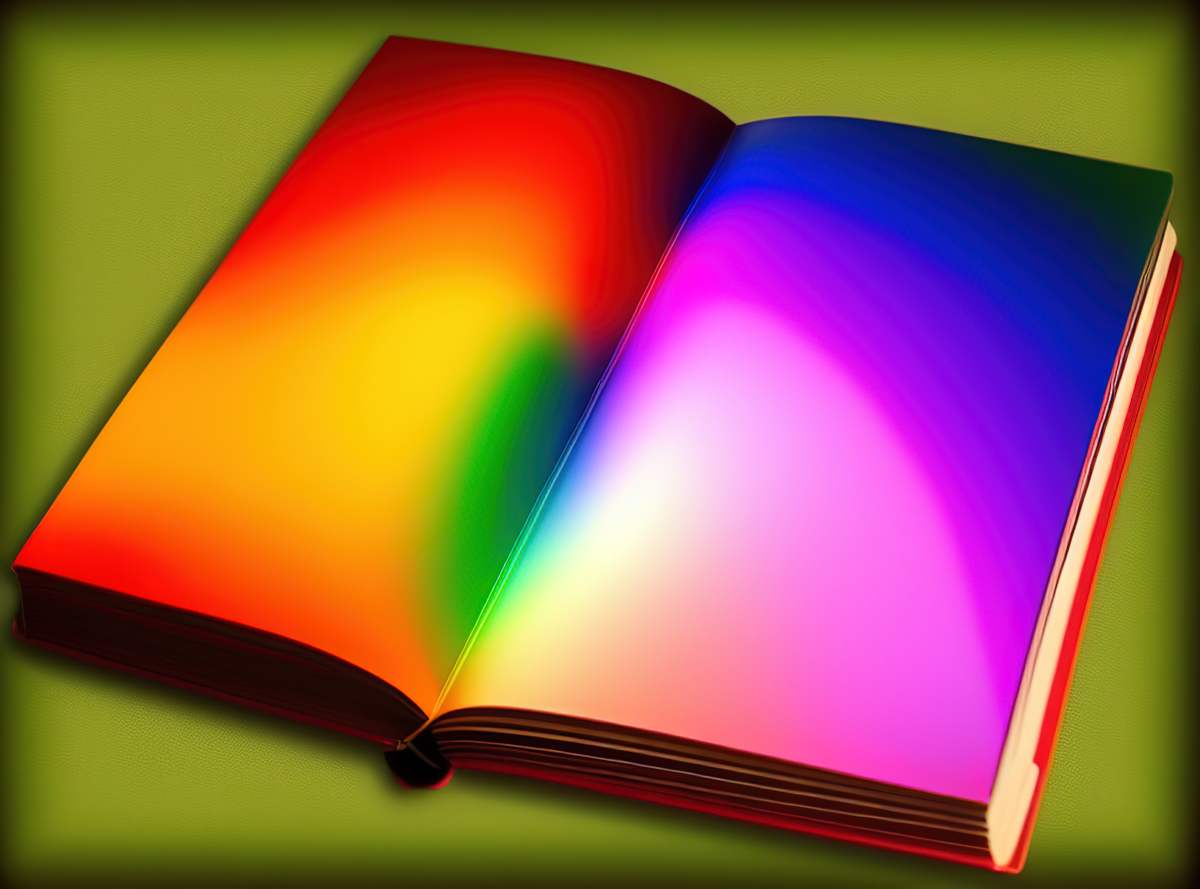This is an ongoing post about my 2023 reading goal of reading queer books by and about queer people. After half a lifetime of absorbing and analysing story, there remains only one sure way to find interesting and surprising perspectives and narratives: Actively seek the perspectives of marginalised voices.
This follows on my interest in reading about asexuality, one of the least understood identities.
When straight people write about queer people they too often make a complete hash job of it. But as became clear from this reading quest, a queer identity doesn’t necessarily help an author to understand other queer identities.
A number of these books are available as epubs and pdfs, freely and ethically at the Trans Reads site. Know that this repository partly exists for research purposes, and not all of the books available there are queer friendly. In fact, one of the most overtly hostile books frequently makes it into the top five most downloaded. I’m glad that no one is sending money in the direction of the bigots.
However, let’s support liberal queer authors and artists where we can.
SHE’S NOT THE MAN I MARRIED: MY LIFE WITH A TRANSGENDER HUSBAND (2007)
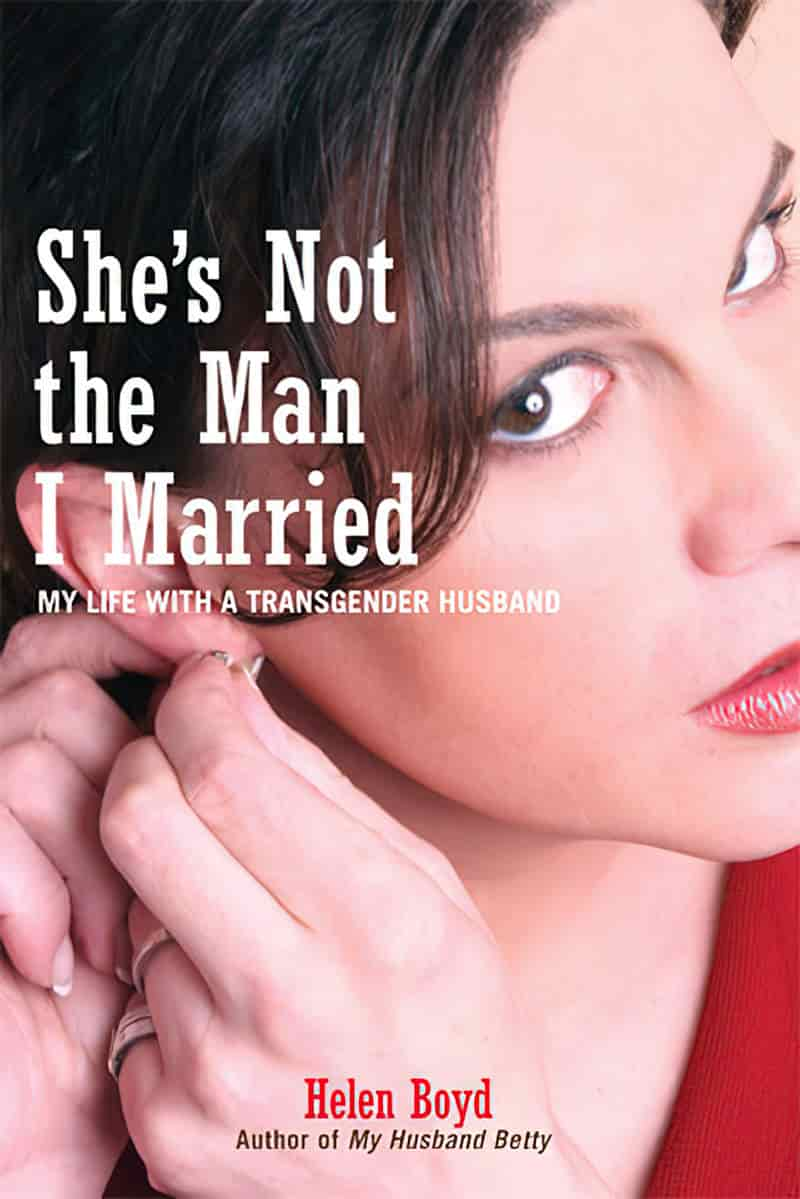
Helen Boyd’s husband, who had long been open about being a cross-dresser, was considering living as a woman full time. Suddenly, Boyd was confronted with the reality of what it would mean if her husband were actually to become a woman socially, legally, and medically. Would Boyd love and desire her partner the same way?
Boyd’s first book, My Husband Betty, explored the relationships of cross-dressing men and their partners. Now, She’s Not the Man I Married is both a sequel and a more expansive examination of gender in relationships. It’s for couples who are homosexual or heterosexual, and for readers who fall anywhere along the gender continuum. As Boyd struggles to understand the nature of marriage, passion, and love, she shares her confusion and anger, providing a fascinating observation of the ways in which relationships are gendered, and how we cope, or don’t, with the emotional and sexual pressures that gender roles can bring to our marriages and relationships.
marketing copy
Written in a conversational, easy-to-read style, I powered through this book. Being 2007, it has of course dated a little. For example: The author, like most people, had not heard of asexual orientation in the mid-2000s, uses ‘asexual’ to describe a married couple who have stopped having sex, and there’s an entire chapter about mismatched libidos which would have benefitted from the insights afforded by the aroace community (many of whom are also trans or non-binary). One of those insights: the distinction between libido and desire, which I wanted to yell through the page.
Even in the mid 2000s, we could have done without the phrase ‘male autism’ to describe ‘male privilege’, which is perfectly fine.
As you’ve probably picked up, a light, conversational tone can feel flippant at times. Boyd’s thoughts on femininity and feminism struck a cord, for sure.
And if you’re the partner of a trans woman you thought to be a man? You won’t find any “She’s still the same person you fell in love with!” assurances here. The emotions are more complex and nuanced and angry than that. So if you’re feeling many complex and hard emotions, this book may be cathartic.
At the same time, this couple is unusual: New York City dwellers (not everyone can afford to live somewhere so liberal), and the couple comprises a soft butch cis woman with a trans spouse who passes as both a beautiful man and as a beautiful woman depending on gender presentation. (How many trans people can say that?) Helen Boyd remains aesthetically attracted to her spouse whether they present as a he or a she.
This book definitely had interesting things to say about what it’s like to find out you’re married to a trans person, and I liked the message that everyone should think a bit harder about gender, especially people in cishet marriages.
TEN STEPS TO NANETTE BY HANNAH GADSBY
ONE OF THE BEST BOOKS OF THE YEAR: PopSugar, Vulture
marketing copy
“There is nothing stronger than a broken woman who has rebuilt herself,” Hannah Gadsby declared in their show Nanette, a scorching critique of the way society conducts public debates about marginalized communities. When it premiered on Netflix, it left audiences captivated by their blistering honesty and their singular ability to take viewers from rolling laughter to devastated silence. Ten Steps to Nanette continues Gadsby’s tradition of confounding expectations and norms, properly introducing us to one of the most explosive, formative voices of our time.
Gadsby grew up as the youngest of five children in an isolated town in Tasmania, where homosexuality was illegal until 1997. They perceived their childhood as safe and “normal,” but as they gained an awareness of their burgeoning queerness, the outside world began to undermine the “vulnerably thin veneer” of their existence. After moving to mainland Australia and receiving a degree in art history, Gadsby found themselves adrift, working itinerant jobs and enduring years of isolation punctuated by homophobic and sexual violence. At age twenty-seven, without a home or the ability to imagine their own future, they were urged by a friend to enter a stand-up competition. They won, and so began their career in comedy.
Gadsby became well known for their self-deprecating, autobiographical humor that made them the butt of their own jokes. But in 2015, as Australia debated the legality of same-sex marriage, Gadsby started to question this mode of storytelling, beginning work on a show that would become “the most-talked-about, written-about, shared-about comedy act in years” (The New York Times).
Harrowing and hilarious, Ten Steps to Nanette traces Gadsby’s growth as a queer person, to their ever-evolving relationship with comedy, and their struggle with late-in-life diagnoses of autism and ADHD, finally arriving at the backbone of Nanette: the renouncement of self-deprecation, the rejection of misogyny, and the moral significance of truth-telling.
After reading an American-centric book, I went closer to home and read the autobiography of Australian, Autistic, ADHD, genderqueer lesbian comedy legend, Hannah Gadsby.
I’m a big fan of Hannah Gadsby. We are born the same year, in a similar part of the world (Hannah in Tasmania, me in New Zealand, in which you feel like a satellite to Australia’s mainland and are the butt of their jokes.) Normally when we read memoirs and autobiographies we’re reading about people who come from different backgrounds from ourselves—different countries, different eras, and that’s a good thing. I think this is the first autobiography I’ve ever read from someone the exact same age, and let me tell you, it’s a completely different experience. I also come from a working class background, so when Hannah talked about the fish and chips as treat, the home-made version as a massive let-down, the family television, the high school experience, it all felt very familiar.
Hannah gives a content warning at the beginning of the book, which is warranted. I’d add that there’s quite a bit of talk about physical childhood injuries, which doesn’t normally get a content note but is the sort of thing which has me skipping pages.
DON’T LOOK AWAY: A MEMOIR OF IDENTITY AND ACCEPTANCE BY DANIELLE LAIDLEY (2022)
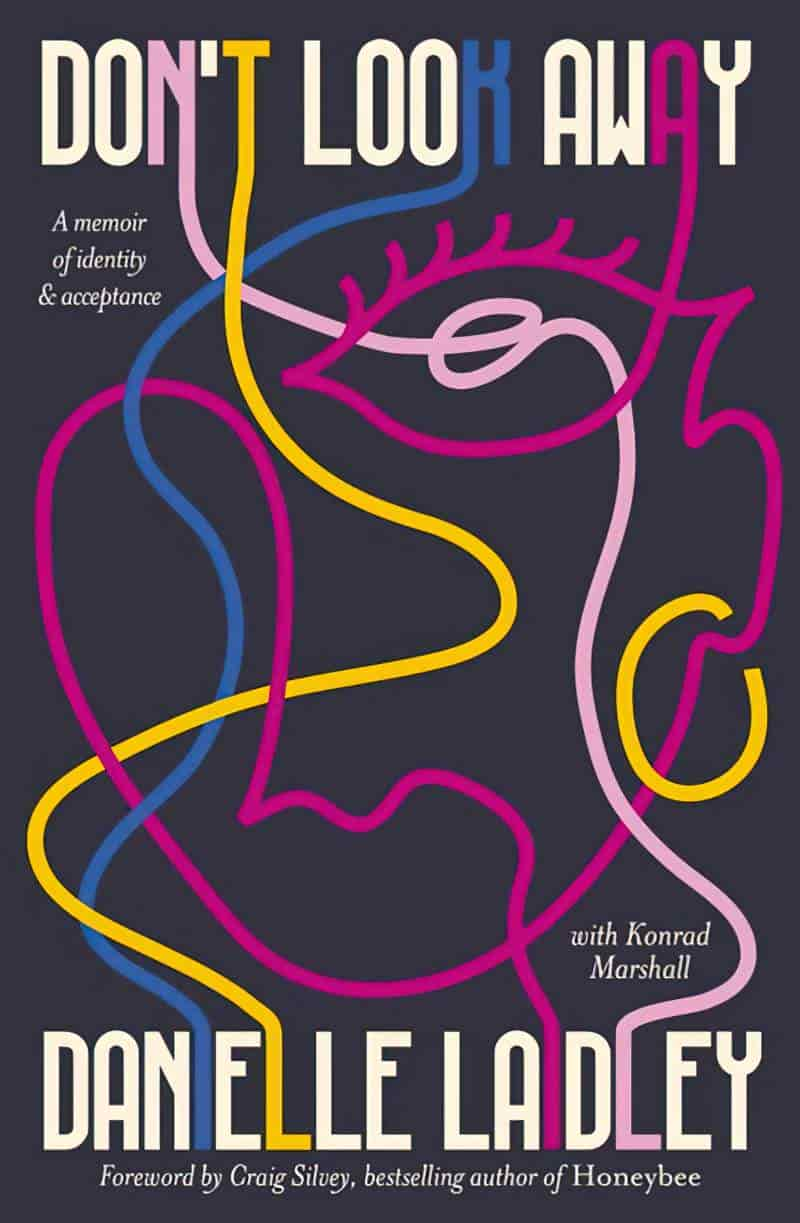
‘It’s an inspiring, disarming, and deeply moving book, and it deserves to be widely read.’ Craig Silvey Fearless. Tough. Uncompromising. This was the persona of former elite footballer and senior AFL coach Danielle Laidley. Fearful. Vulnerable. Uncertain.
This is how Danielle felt for most of her life. For the best part of five decades, within a hyper-masculine sporting environment, Danielle Laidley harboured a secret. As a boy growing up in the backblocks of Perth, as a teenager and young man playing AFL, as a married father of three, she knew she was female, regardless of the gender she was assigned at birth. For years Danielle lived a compartmentalised life, managing her secret first with a relentless quest for sporting success and workaholism, and eventually with substances that dulled the pain. She covertly experimented with her transgender life but eventually rumours began to circulate. The walls started closing in. Then there was nowhere to hide.
This is an unflinching account of what it’s like to know you don’t fit the body you were born into, and the desperate measures taken to mask the fear of being outed, of losing those you love. It’s also an uncensored behind-the-scenes look at elite football from the perspective of player and coach, where Danielle is both participant in and analytical observer of her double life. It’s about the courage it takes to step into the world as Danielle May.
marketing copy
I do not follow any rugby at all, so I don’t know of Danielle Laidley outside the fact that she was a footballer, then a famous Australian football coach, then arrested while dressed in ‘drag’ (actually as herself), then humiliated all across Australian cheap press after someone in the police force leaked her mug shot photos and snapped her in the station.
It’s bad enough reading about Hannah Gadsby’s experience growing up in a part of Tasmania renowned for its 1980s and 90s homophobia, but this is far more recent. As far as trans acceptance goes, Australia is where it was with homosexuality 30 years earlier.
There was quite a bit about football in this book, in the same way there’s quite a bit about football in Friday Night Lights. Easily skipped if you’re not interested. Danielle Laidley is also an interesting voice on what it’s like to exist as a sporting celebrity in Australia. (I wouldn’t want that for the world.) Almost as harrowing as the transphobia: The level of injury we accept and expect as normal for someone who dedicates their youth to rugby. I stand by my initial opinion that all forms of sport which involve an egg-shaped ball are stupid at their core.
This memoir made me think about how a disproportionate number of trans women find themselves in hyper-masculinised cultures. Rugby in Danielle’s case, but the military is another place where a surprising number of trans women spend their working lives before coming out (or not). We shouldn’t be surprised by this phenomenon, because it makes complete sense. When you’re required to ‘act’ the wrong gender, it’s actually easier to pull off when you’re doing it at the far end of the gender spectrum.
Also, how many ciswomen would make excellent coaches if given the chance? Despite being a woman (and perhaps even partly because of it), Danielle is an absolute fount of wisdom about all things tactical.
GENDER OUTLAW: ON MEN, WOMEN AND THE REST OF US BY KATE BORNSTEIN (2016)
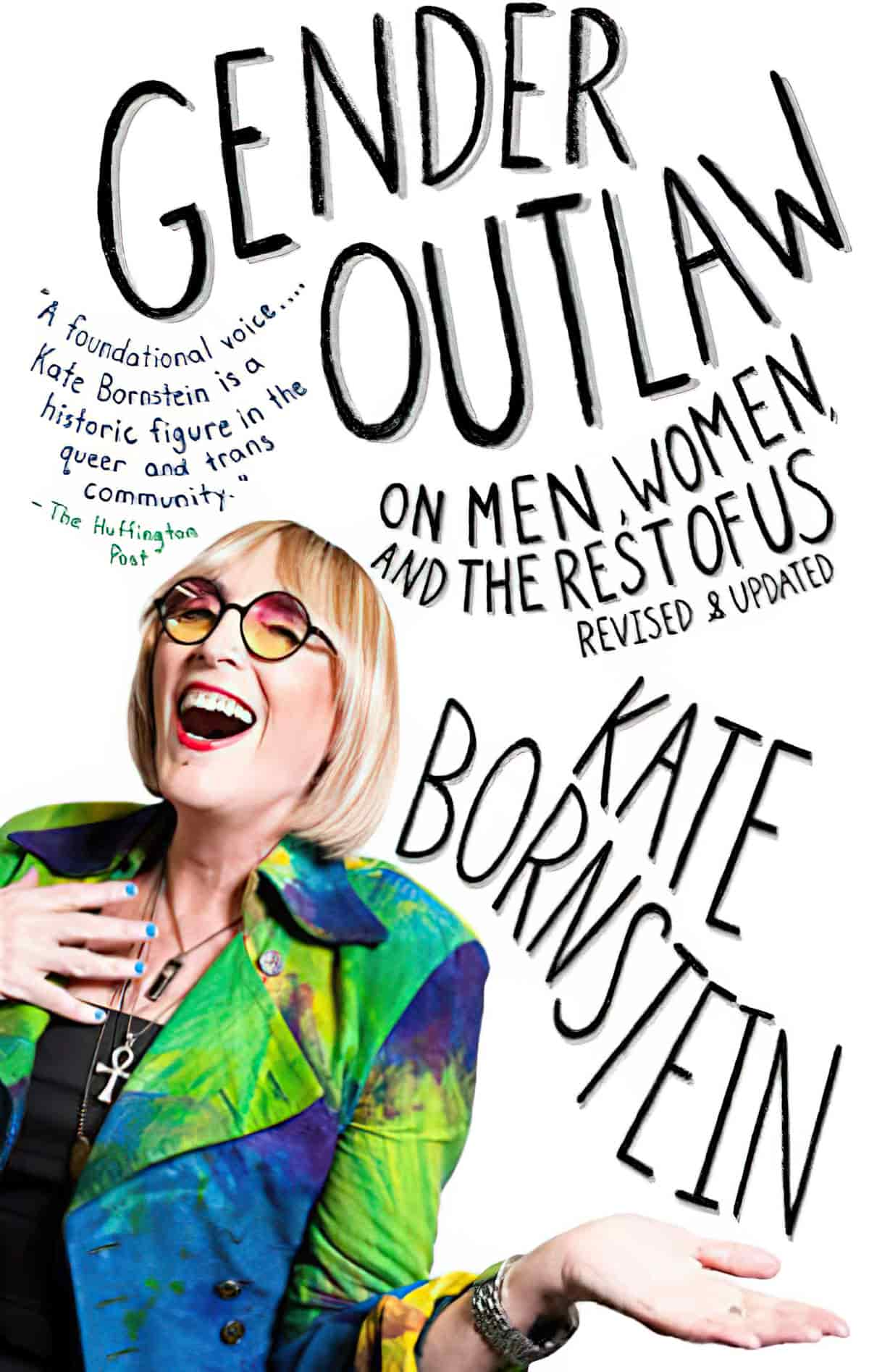
I read the classic 1994 book revised and reformatted. The result is something with a more of a ‘magazine’ style to it—old excerpts with contemporary commentary and updates from the same author.
Bornstein spent much of their life in Scientology. She doesn’t explain this in the book but I did hear her explain why Scientology sucked her in during a podcast interview I listened to: According to Scientology, when you die you don’t have a gender. This is, naturally, extremely freeing and appealing when you’re trans non-binary here on earth and not having a good time of it. I’ve already read the tentpole Scientology critiques, watched the documentaries, but came away from this memoir with a deeper understanding of just how insidiously something as wacky as this can suck vulnerable people in.
I was a little skeptical of the author for hanging out with Caitlin Jenner, a trans woman of wealth who has climbed the greasy pole to trans womanhood then pulled the pole up behind her, especially when it comes to access to sport. However, my takeaway impression of Kate Bornstein is that they have worked really hard to overcome societal bigotry to the point where they really have no choice but to be the sort of person who embraces everyone, no matter what. I’ve seen this in a number of older trans women, this radical acceptance. Perhaps that’s the only way they’ve been able to survive.
TOMBOY: A GRAPHIC MEMOIR BY LIZ PRINCE (2014)
“Graphic” refers to “graphic novel”.
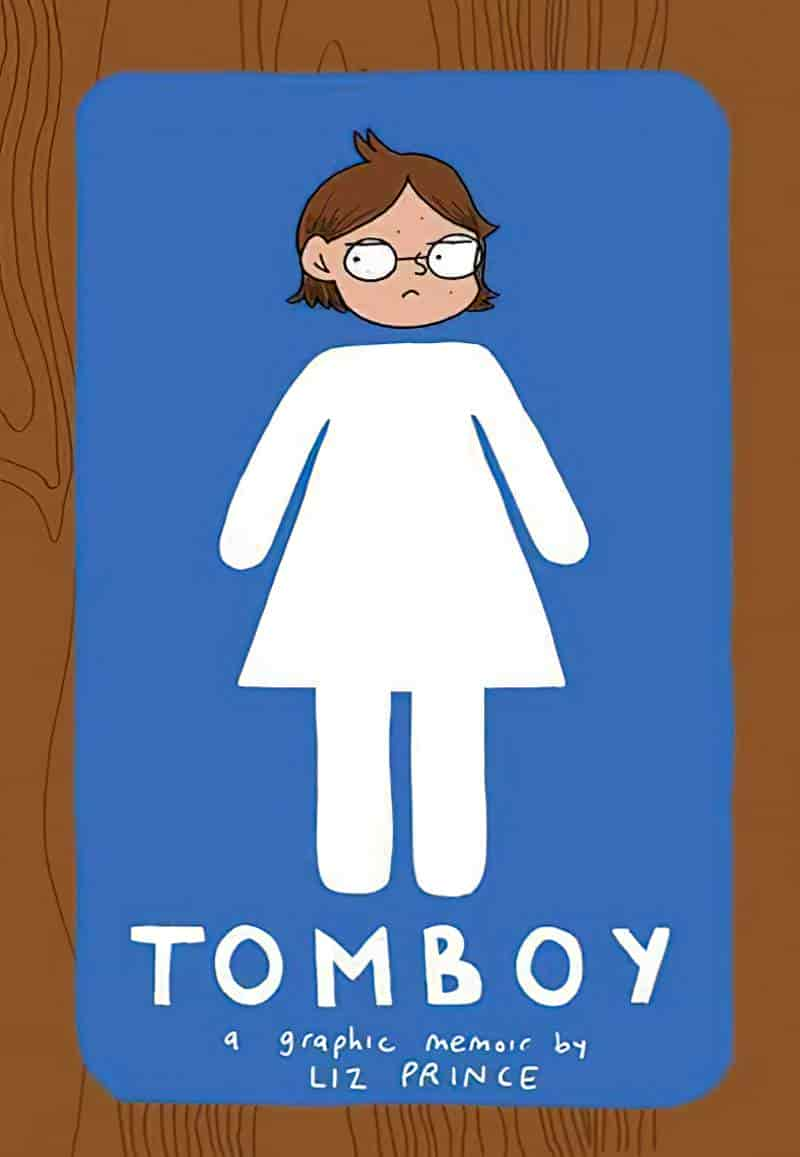
Growing up, Liz Prince wasn’t a girly girl, dressing in pink tutus or playing pretty princess like the other girls in her neighborhood. But she wasn’t exactly one of the guys, either. She was somewhere in between. But with the forces of middle school, high school, parents, friendship, and romance pulling her this way and that, “the middle” wasn’t exactly an easy place to be.
Tomboy follows award-winning author and artist Liz Prince through her early years and explores—with humor, honesty, and poignancy—what it means to “be a girl.”
marketing copy
The author was gender non-conforming as a child but grew into a (cishet) woman who looked hard at the femme phobia society had inculcated into her and realised that there are many different ways to be a woman.
This is a common trajectory for so-called tomboys and soft butches. Tomboy: A Graphic Memoir is a valid and valuable story. However, I can see it being picked up by transphobes who don’t accept that some of those so-called tomboys will, legitimately, grow to be trans men.
I’m talking about crap like this:
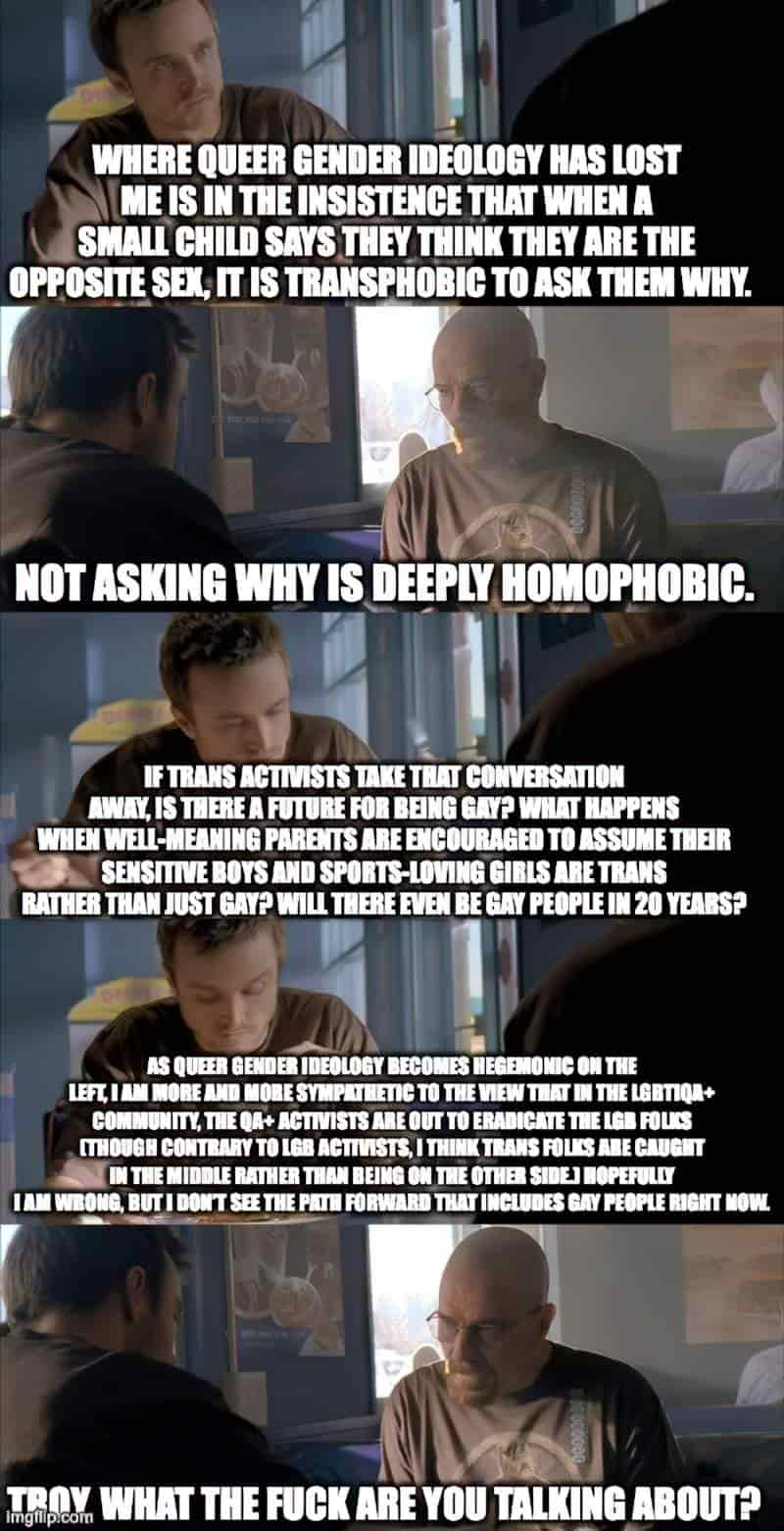
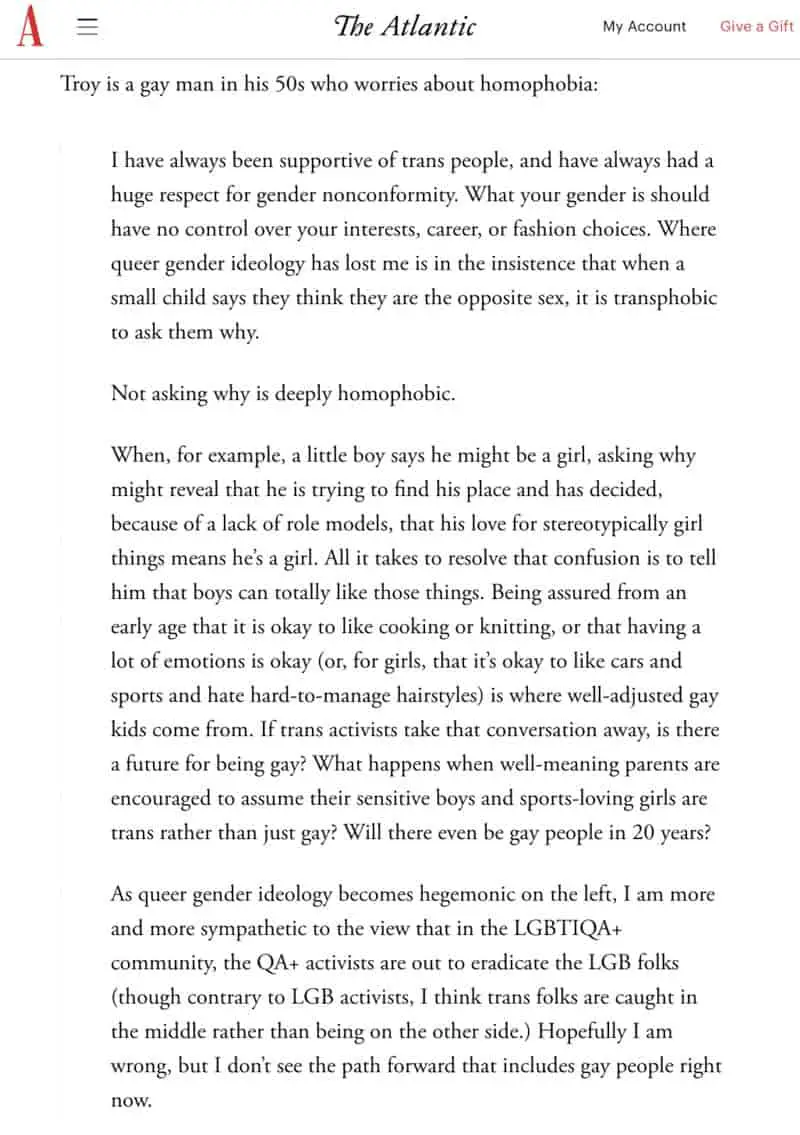
SELF- MADE MAN: ONE WOMAN’S YEAR DISGUISED AS A MAN BY NORAH VINCENT (2006)
Speaking of books which actually have been appropriated by terrible people… (Not that I knew this until after I’d read it)
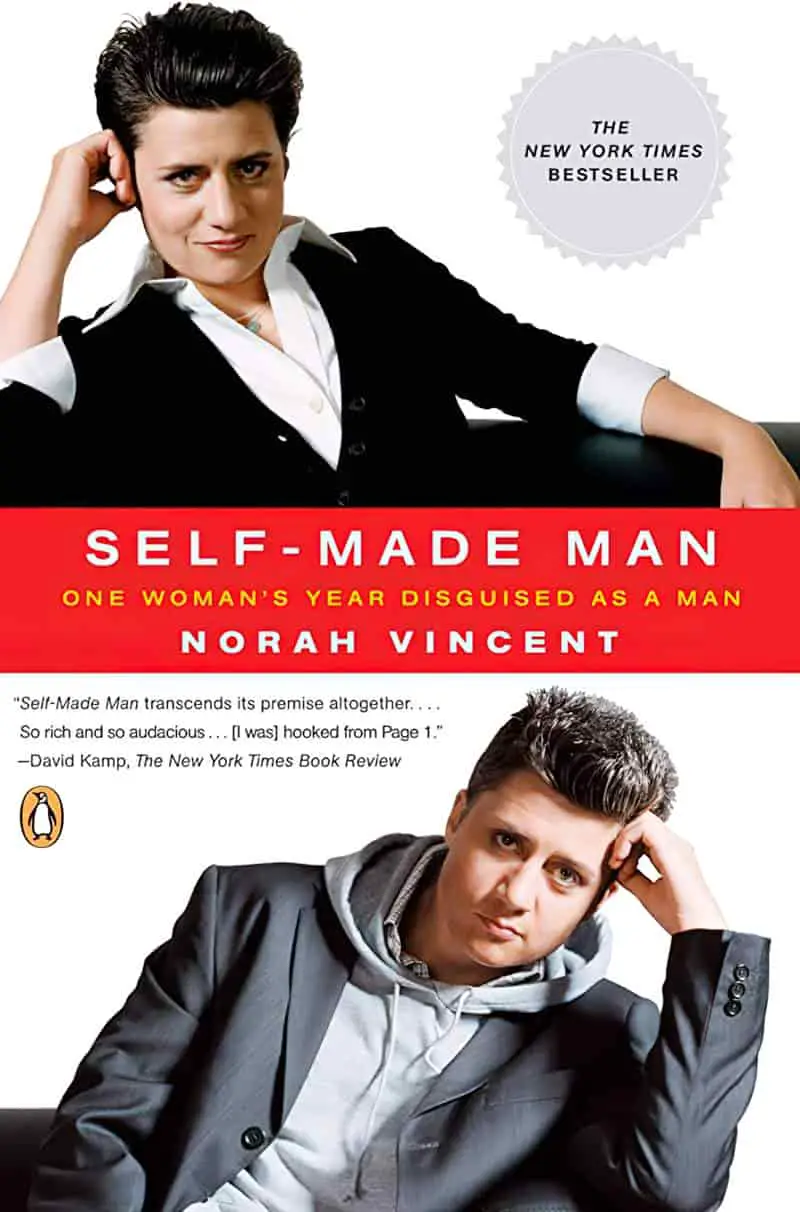
Wow, how things have changed since this book was written. In some ways, 2006 feels like yesterday. It’s easy to forget that the media have only recognised the existence of trans people since Caitlin Jenner, who came out in April 2015, precipitating a terrifying watershed moment for the trans community everywhere. Trans people knew, now they would be visible. And visibility without acceptance is a terrifying thing.
Given how hardly anyone was talking about “the transgender issue” back in 2006, it shouldn’t be surprising at all that a (lesbian, male-passing) cis woman can dress as a man for a social experiment, hoping to learn something about gender, and write an entire book-length work without so much as a nod to the reality that the world already has numerous examples of this ‘experiment’ happening every day, courtesy of trans men. Aside from saying, “I’m not a transsexual” when finally revealing her femaleness to the men’s groups she has infiltrated, Norah Vincent doesn’t refer to transgender experience once. Worse than that, she came out of the experience thinking there’s “no such thing as human beings, just human males and human females.” Non-binary genders weren’t on the radar at all back then. Yet non-binary people have always existed, so to write such a thing is simply dull, dead-end, incurious thinking.
Other smaller things date this book horribly, for example use of “gypped” and “liminally autistic” used as insults. Then there’s the example of a monk who tells Norah/Ned he’s completely uninterested in sex (today we’d say he’s asexual), yet Norah concludes he’s “pathologically repressed”. Peak acephobia. (To be fair, very few people knew about asexuality, let alone respected it as an orientation, in the early to mid noughties.)
If this book still has value, it might be useful to anyone still having trouble with the notion that people become their gender through social conditioning, and who would avoid picking up a memoir by an actual trans person due to, I dunno, transphobia. Norah only ‘lived as’ a man for a year, yet felt herself becoming more and more Ned as time went by, especially after putting on a power suit.
The other big takeaway point: Norah ended up having a mental breakdown. Her psychologist told her that if she hadn’t experienced a breakdown after spending an entire year living in the wrong gender, then that would’ve earned her the “crazy” label. If that doesn’t afford every cis person empathy for trans people, frequently denied gender affirming care and correct pronouns, who spend lifetimes with such dissonance and dysphoria, oftentimes without ending up without a mental illness or in a psych ward, I don’t know what would. Perhaps everyone should have to live outside their gender for a while, like how every able-bodied person who seeks a car licence should have to ride a push bike once down a busy road. (I frequently thought that when I was a bicycle commuter, frequently being terrorised by inconsiderate drivers.)
In short, Norah Vincent’s book would have been far more regularly insightful had it been written by someone with a background in gender studies. Being queer yourself simply isn’t enough when it comes to queer literacy across the rainbow. Vincent is a good writer, which only means she can wield a sentence with force, but I can’t recommend this book in 2023. We should listen to trans voices when it comes to navigating the different gendered subcultures, and now there are more and more trans voices to hear. Norah Vincent’s experiment now seems a bit crass.
For example, just acknowledging that there are different types of masculinities would be a good start.
Men, Masculinity, and Manhood Acts by Douglas Schrock and Michael Schwalbe (2009)Research on transsexuals also shows how the elicitation of deference depends on the type of man one is perceived to be. Based on in-depth interviews with 29 transmen, Schilt (2006) found that whereas white transmen beginning to work as men were taken more seriously, had their requests readily met, and were evaluated as more competent than they were as women, young, small Black, Latino, and Asian transmen did not gain similar advantages. Similarly, in her interview study of 18 transmen, Dozier (2005) found that, as men, white transmen reported being given more respect and more conversational space and being included in men’s banter. They also experienced less public harassment. Transmen of color, on the other hand, reported being more frequently treated as criminals, and short and effeminate transmen reported being publicly harassed as gay. Gaining the full privileges of manhood is thus shown to depend not merely on being recognized as male, but on the whole ensemble of signs that are conventionally taken as evidence of a masculine self.
After reading the book, I learned that Norah Vincent died by assisted suicide just last year, 2022. The media has put this down to her stint dressed as a man. However, in the book it is clear that Norah went into this ‘experiment’ with existing mental health issues. It would also appear that in the years since writing this book and gaining considerable attention, she unfortunately went the way of the TERF, refusing to acknowledge that trans people are the gender they say they are.
Of course, Norah Vincent’s suicide was picked up by the manosphere as evidence that men really have it harder, which drives a cis woman to suicide when attempted. This tragic story is being used as evidence that women have been brainwashed into thinking that women are oppressed under patriarchy. I doubt the manosphere YouTubers running with that line have read the book, which has a far more nuanced message than that.
THE HIDDEN CASE OF EWAN FORBES BY ZOE PLAYDON (2021)
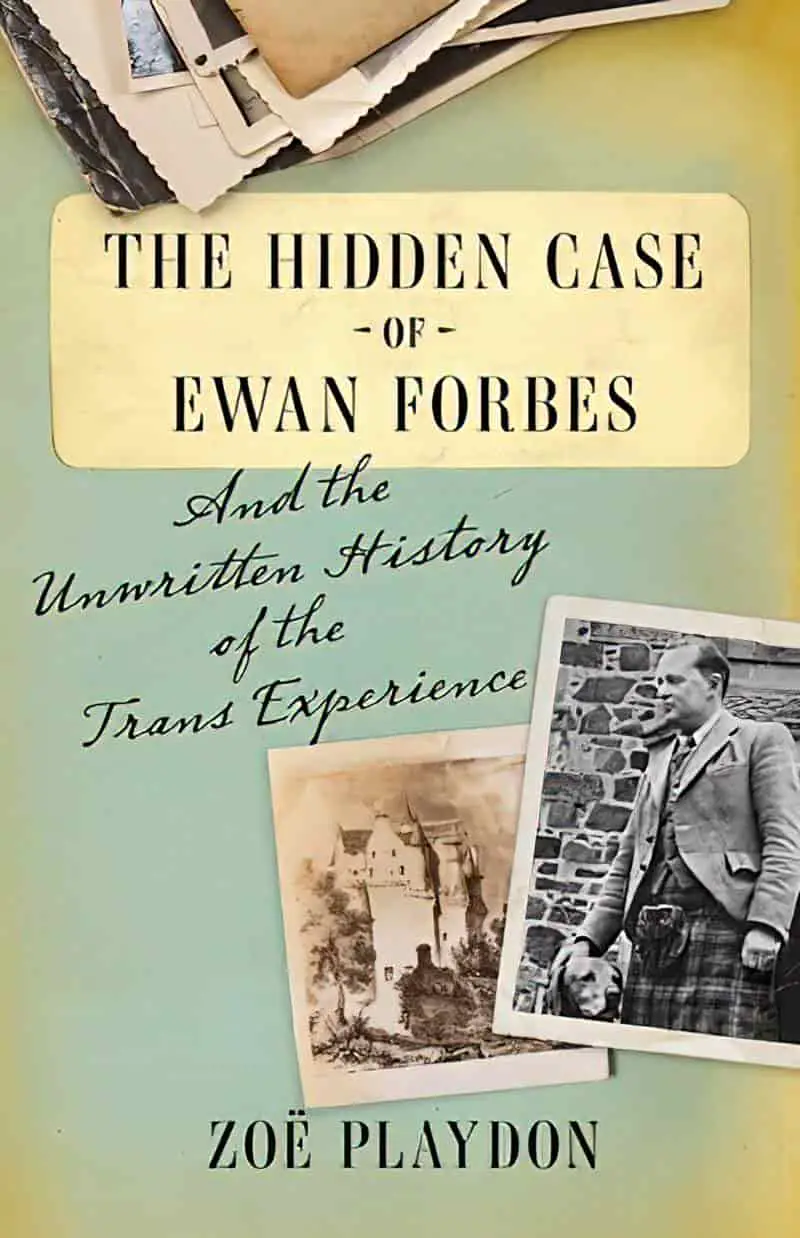
The life story of an aristocratic Scottish trans man and the secret 1968 legal case that provides “a fascinating look into the changing landscape of trans rights” ( Library Journal ) throughout history.
Ewan Forbes was born to a wealthy, landowning family, holders of a baronetcy, in Aberdeenshire, Scotland, in 1912. Assigned female at birth, his true identity was nevertheless clear even in childhood—and so, with the support of his mother, he was taken to European specialists and eventually treated with early preparations of synthetic testosterone. Raised as a boy at home but socially obliged to present himself as a girl in public until his official coming out to the Queen, Ewan grew up, became a doctor, and got married. (This required him to correct the sex on his birth certificate, which was possible at that time without much fuss.) For decades, he lived a quiet life as a husband, doctor, and a pillar of the local community.
But in 1965, Ewan’s older brother died unexpectedly—leaving Ewan, the next oldest man in the family, to inherit the baronetcy. When his cousin John—spurred on by Ewan’s sister—contested the inheritance he was forced to defend his male status in Scotland’s supreme civil court, where he prevailed.
On the topic of quiet lives, Jeremy B. Jones writes at Bitter Southerner about his grandfather who lived a quiet life — a way of living which now feels all but gone. Today, a quiet life feels audacious. “How could you want only that? the world demands. There’s more to have, always more.“
The universe did not want me to read this book. First I ordered a second hand copy from a charitable organisation in Victoria whose warehouse was subsequently destroyed in the floods. So I bought a copy new, read some while stuck as a carer in hospital over summer and misplaced it. Good news is, The Hidden Case of Ewan Forbes is freely (and ethically) available as an eBook via the Trans Reads website, so I downloaded it onto my Kobo.
Author Zoe Playdon is an extremely impressive thinker with four or five degrees, a lifetime of queer activism and finishing Ewan’s biography was her first ‘retirement’ project. I believe Playdon’s background in academic writing shows. By which I mean, this text is dense. It’s dense with information, and you don’t want to miss any, because all of it is thought provoking, sometimes enraging. Going from a reality TV-style work such as Self-made Man, I found myself deliberately slowing down to finish this one. As well as being a story about Ewan Forbes himself, this is a history of the British and Scots legal and medical systems in regards to trans people.
Ewan himself comes across as a wholly wonderful person and I’m so glad his life has been immortalised by someone as impressive as Zoe Playdon, who did a great job of crafting a narrative despite knowing very little about Ewan. She mostly uses historical facts to deduce what he would have known and felt. The work behind this book must have been immense, but once you get into the narrative, it starts to read very easily.
The book ends with a brief history of trans rights and transphobia in the UK. Especially if you’re not a social media person, much of this will be eye-opening (and shocking) to you.
Before reading, I recommend seeking out Zoe Playdon talking about Ewan Forbes in podcasts or on YouTube. Playdon introduces Ewan without giving away the turning point, and you’ll be well placed to ease into the story if you hear her talking about it first.
THE ART OF BEING NORMAL BY LISA WILLIAMSON (2015)
It’s amazing how quickly YAL dates. Shouldn’t be surprising, really, since YAL is so often at the cutting-edge of culture AND youth culture rolls over a new generation in however long it takes to get through high school.
The author is a cis woman writing about trans kids but she was working with trans kids at a gender clinic, so there’s that. I’m not a fan of the scene in which a trans boy comes out by lifting his shirt and showing his binder. It feels unrealistic and as if designed for the stage of the page.
A very similar scene was rounded criticised in the film Albert Nobbs. But some consider it appropriate:
Insofar as breasts have come to signify femaleness in Western culture, some of the audience might read it as a revelation of an essential femaleness concealed beneath male disguises. But a more sophisticated reading might see it as a revelation not of femaleness but of gender queerness because what is being revealed is the secret itself. Until the breasts are revealed, no one would know that Albert and Hubert have a secret to hide. So what Hubert seems to be saying to Albert here is not, “I’m really a woman”, so much as, “I have the same problem that you do – a body that always threatens to give me away and endanger me”.
Purple Prose
There are other problems with this book.
In the blurb: “Two boys.” and “David wants to be a girl.”
consumer review
Being trans isn’t about wanting to be another gender. We actually are that gender, but have been seen as our birth gender. And that ‘wanting’ to be a girl shtick continues through the whole story.
Another consumer corrects the blurb:
David longs to be a girl. David is a girl who longs for acceptance.
Also, we’re now past the point where it’s okay for authors to use a gender reveal as a plot reveal. This adds to the prevailing idea that trans people are really one thing but spring gender surprises on others.
It is unrealistic that a trans boy would keep calling a trans girl ‘David’ and ‘he’ after finding out her real identity. Trans kids are extremely respectful of other people’s pronouns.
But probably the biggest problem is with the NHS making it nigh on impossible to actually access gender affirming care if you’re a trans teen in need of blockers and whatnot. As Zoe Playdon described in her book about Ewan Forbes, British kids without wealthy parents are fresh outta luck. In which case, it is some kind of terrible to be surrounded by stories where every fictional trans teen has access to these things, and you don’t. Of course, if authors don’t show trans teenagers with access to health care, they’re accused of writing nothing but trauma.
This book is written for cis teens, not for trans teens themselves. And considering the dearth of trans fiction available in 2015, I would say that something is better than nothing. Good to see trans voices getting published now too.
One scene in The Art of Being Normal reminded me of this:
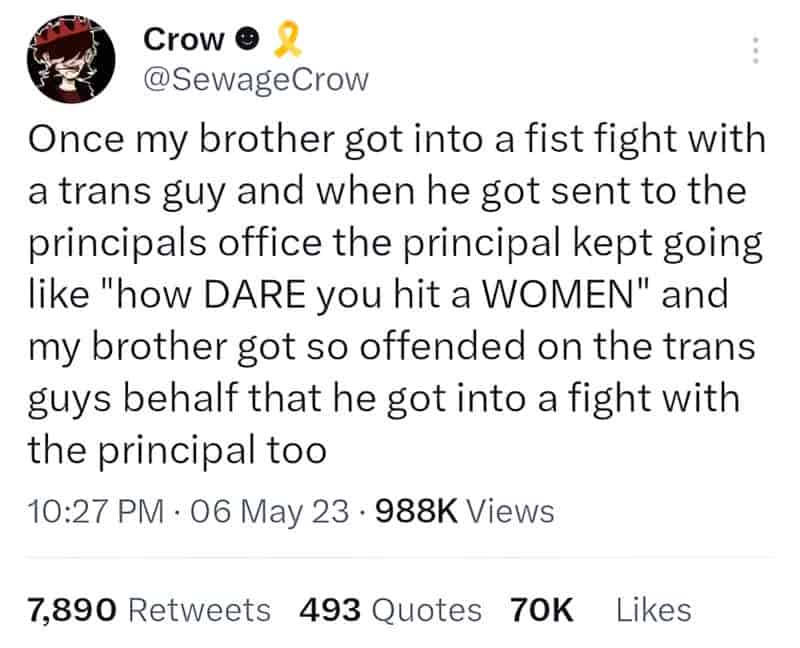
Fortunately, the overriding message of The Art of Being Normal is that it’s not so great being normal, and becoming ‘normal’ is an unworthy goal.
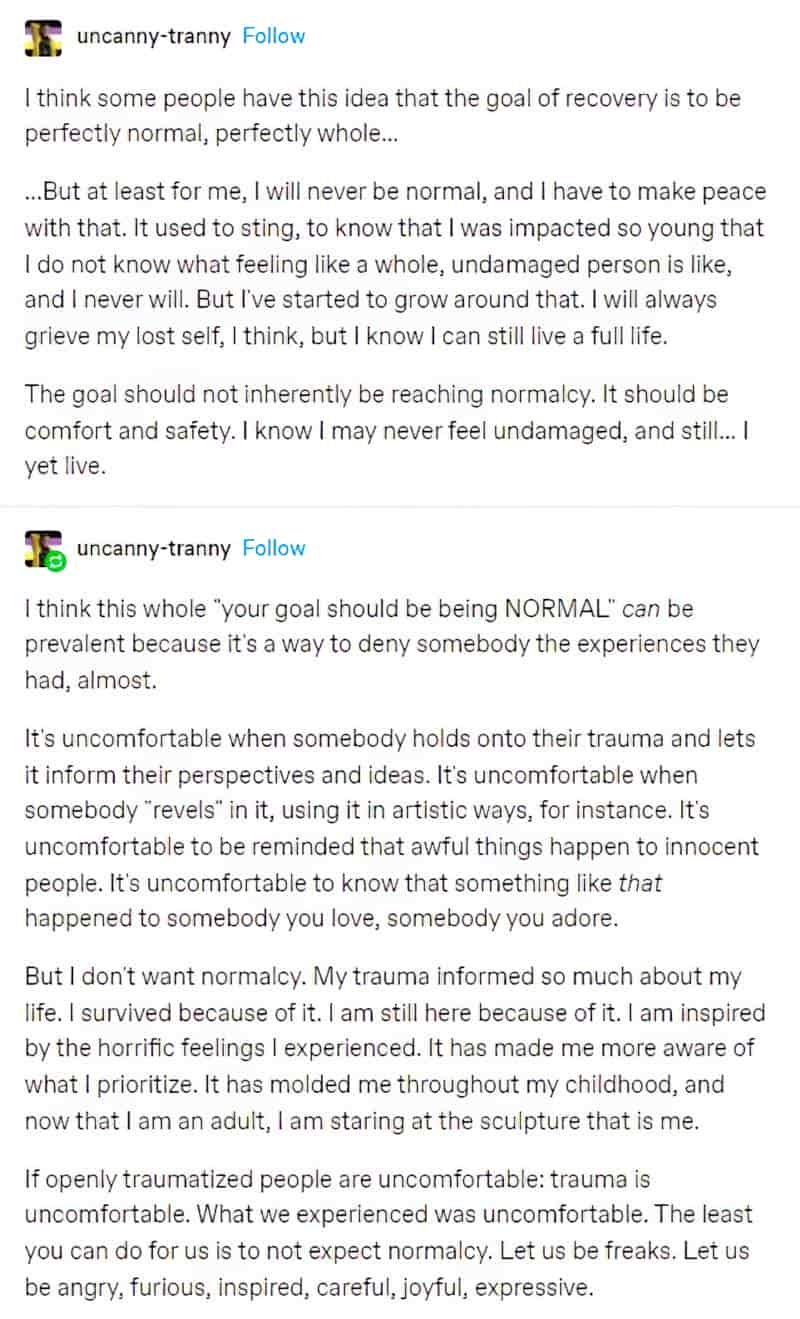
DARRYL BY JACKIE ESS (2021)
Darryl Cook is a man who seems to have everything: a quiet home in Western Oregon, a beautiful wife, and a lot of friends to fuck her while he watches. But as he explores the cuckolding lifestyle, he finds himself tugging at threads that threaten to unravel his marriage, his town, and himself.
With empathy and humor, debut author Jackie Ess crafts a kaleidoscopic meditation on marriage, manhood, dreams, basketball, sobriety, and the secret lives of Oregonians.
marketing copy
I made sure my next read was by an actual trans person. The author is a co-founder of the Bay Area Trans Writers Workshop.
But that’s literally all I knew before going into this short novel which probably counts as a novella. From one extreme to the other — I feel this is very niche, perhaps written for other San Francisco trans writers workshop participants first and foremost, which is fine. But to the point where I just don’t get it. Apparently this is a work of comedy. It’s about a rich guy who is drug addicted, middle-aged and ill at ease with both his gender and his orientation. So I couldn’t really find the humour in it. I expected Darryl to work out that in the end that (s)he is actually trans. But that would be too tidy, and the author is obviously resisting neat categorisation, and perhaps spoofing everyone’s obsession with labels. I think that might be the humour of it? Satire? Of mindfulness, apparently. Maybe I just don’t know enough about mindfulness to have picked up on that.
Also, it might be set in the same universe as another book I haven’t read (or heard of) so that didn’t help.
I’m a hundred percent sure there’s a lot I’m not getting with this story, but I did ultimately skim it. I simply didn’t want to spend much time in Darryl’s company. He’s an unreliable narrator in the sense that he skips over some really horrendously traumatic details about “Clive”. I’m left with the sense that I’m supposed to complete the jigsaw puzzle myself, but I suspect the final pieces will reveal some horrific imagery. However, the author has herself said that the story is more about voice than plot. I guess this wasn’t what I wanted in a ‘transgender read’.
THE LANGUAGE OF BODIES (2022)

Maddie Wells’ life spirals out of control after the murder of her wife Char, a transgender woman of color. Hunger for revenge drives Maddie to take a job at a wax museum near the murderer’s hometown, where she studies revenge and plots how to strike back. Befriending the murderer’s wife is the first stage in Maddie’s plan to make him pay. The Language of Bodies probes the seduction of vengeance using vivid, sensual imagery to explore how love transcends the particulars of body parts, and how revenge blurs the line between victim and perpetrator, hero and villain. It’s a gorgeous, dark tale about the enduring power of love, and the human spirit’s unwillingness to give up.
The Language of Bodies audiobook was available for a low price during pride month at Libro.com. (Support local bookshops! Avoid Amazon/Audible!)
Okay so it should be obvious from the title, but this book is about bodies at every thematic level. If you are squeamish regarding skin picking and things like that, you may find parts of this book a bit much. I found it a bit rough going at times because of that.
This is a strange book, though nowhere near as strange as Darryl by Jackie Ess and nowhere near as disturbing. It didn’t go on as I thought it had began, with a grieving widow inheriting life insurance worth way, way more than she had expected because her recently murdered Black transgender wife Char had kind of expected something bad would happen. I thought the plot would be about how the main character would change the world for the better by spending the money (as the dead trans partner wished). That’s not what happens.
Like Hitchcock’s Psycho, the fact of Maddie’s sudden immense wealth is swept aside, briefly mentioned again at the end.
Enjoyment of this novel will partly depend on whether you find Maddie’s two unlikely sidekicks interesting or not. I did not, particularly. I found them both too caricatured.
However, I really like the overall messaging of the story, which I believe could only be written by an aspec or pansexual author — that love transcends the parts of a body.
Also, it’s really good to hear audiobooks voiced by queer actors. The transfeminine non-binary actor who read this one, Nicky Endres, has the superpower of range, and is able to voice deep, more masculine voices as well as higher, more feminine voices with apparent ease. I’m very wary of audiobooks read by men who use a soft, annoying voice to convey femininity, or woman narrators who drop their voices in an equally annoying way in an attempt to convey masculinity, so I can’t express how great this was. More trans people reading audiobooks, please, queer content or not.
GENDER, IDENTITY, SEXUALITY AND AUTISM (2019)
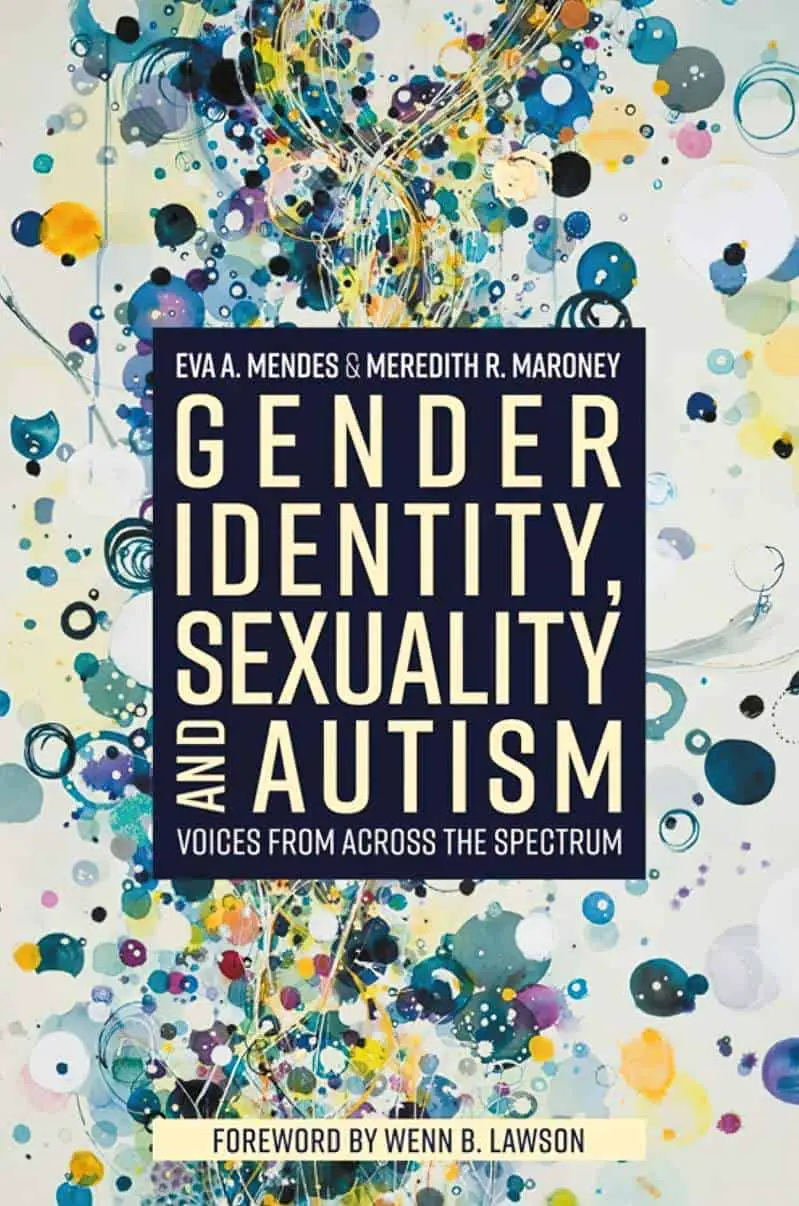
Bringing together a collection of narratives from those who are on the autism spectrum whilst also identifying as lesbian, gay, bisexual, transgender, queer, intersex and/or asexual (LGBTQIA), this book explores the intersection of the two spectrums as well as the diverse experiences that come with it. By providing knowledge and advice based on in-depth research and personal accounts, the narratives will be immensely valuable to teenagers, adults, partners and families. The authors round these stories with a discussion of themes across narratives, and implications for the issues discussed. In the final chapter, the authors reflect on commonly asked questions from a clinical perspective, bringing in relevant research, as well as sharing best-practice tips and considerations that may be helpful for LGBTQIA and ASD teenagers and adults.
Considering this book was published in 2019, I was a bit surprised at the language used. The vast majority of the text feels like direct transcripts of the interview subjects (no doubt edited for clarity). Many of them were for this interview using the term ‘high functioning’, which has been unacceptable in Autistic positive circles for at least five years.
On top of that, the book doesn’t make a great job of defining bisexuality, which you really want to get right if you’re writing a book which is literally about gender and sexuality. It is indeed possible to describe bisexuality without reinforcing the gender binary!
Finally, one of the respondents has found Harry Potter fandom hugely important to finding their queer tribe. I just looked that up and it was only in 2020 that Rowling started revealing to the world the extent of her terf radicalisation so I can accept that nothing in any footnotes talks about the huge irony of this. It just made me sad, to be honest, because I know the Harry Potter series has been hugely important in many people’s lives, especially perhaps in the autistic and queer communities.
(If J.K. Rowling is herself not on the autistic spectrum I will eat every one of my hats. Yes, yes, not many would wish to claim her, especially since she uses Austistic people as pawns in her rubbish arguments, but she wouldn’t be alone when it comes to influential autistic women turning into terfs. The Australian who coined the term ‘neurodiversity’ has recently outed herself as another one.)
Anyway, apart from those issues, it’s a thought-provoking read, which really just cracks open the lid on everything we have yet to learn about the connection between Autism and queerness. Asexuality was well-described and represented, which is unfortunately not a given, since Autistic people have been historically desexualised, like ex-Evangelical Christians, many have fought hard for the right to have their own sexuality acknowledged, and feel that aspec Autistic people stand in the way of their being treated as adults.
